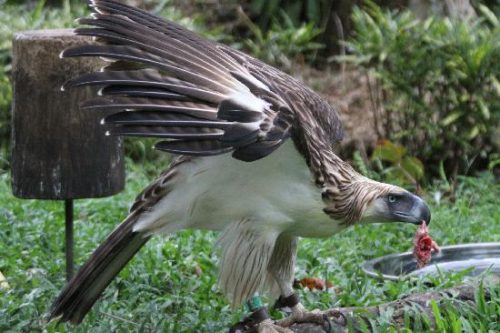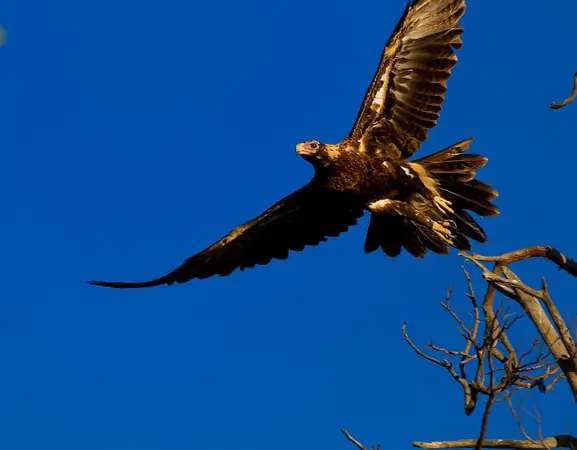Philippine eagle (Pithecophaga jefferyi) is admired not only for its powerful nature but also for of its unique appearance. You won’t see too many like it as it is only one of its kind. Unlike golden eagle, Philippine eagle speaks very high of its dark brown feathers on white plumage. The Philippine eagle is arguably one of the rarest birds in the world. It is also called ‘Monkey-eating eagle’. True to its name the eagle is a permanent resident in the forests of Philippine.
Philippine Eagle Facts
Anatomy
- The total length of the bird including tail measures around 86–102 cm (2 ft 10 in–3 ft 4 in). The Philippine eagle is thought to be the largest eagle in the world with the record length measuring up to 112 cm (3 ft 8 in).
- The males are 4.5 kg (9.9 lb) heavier while the female weigh up to 6 kg (13 lb).
- The wingspan of the Philippine eagle is 184 to 220 cm (6 ft 0 in to 7 ft 3 in). The bill averages 7.22 cm (2.84 in) in length and the tail is 50 cm (20 in) long.
- The brown shaggy crest of the Philippine eagle and its powerful claws are enough to make us believe that the bird has hardly any potential predator.
- The underparts are pure white, legs and claws are yellow, and the remaining feathery part is dark brown.
- While the adult has high-pitched calls the young produces a series of sounds.
Distribution
- The eagle is a native bird of Philippine and it lives on four islands: Leyte, Mindanao, Samar, and Luzon.
- The island of Mindanao hosts the maximum number of Philippine eagles with the total population of 82 – 233. It is also known to live in the Northern Sierra National Park on Luzon and Mount Kitanglad National Parks on Mindanao.

Habitat
- The eagle makes habitat in mid-montane forests but it likes to live in steep areas. It can be found as high in the mountains as 1,800 metres (5,900 ft) above the sea level.
- The total estimated habitat range of the Philippine eagle is 146,000 km2 (56,000 sq mi).
Feeding Ecology and Diet
- Scientists used to believe earlier that the Philippine eagle feeds almost entirely on the Philippine long-tailed macaque (the Philippine monkey) however this turns out to be false.
- The eagle is an apex predator and it feeds on anything that comes its way. The prey varies significantly from small mammal to a large Philippine deer weighing 14 kg.
- The eagles living in the Mindanao Island are more apt to find lemurs whereas those living on Luzon Island feeds on flying foxes, monkeys, giant cloud rats Phloeomys pallidus, birds, and monkeys. It also supplements its diet with some lizards and snakes.
- In some parts of the country, the Philippine eagle relies 90% on the flying lemurs.
- The eagle’s diet is also composed of flying squirrels, rats, monitor lizards, macaques, tree squirrels, hornbills, Asian palm civets, and fruit bats.
- It typically waits on a tree branch and focuses on the prey keeping its body motionless.
Reproductive Biology
- The female attains the maturity after 5 years of age while the males become mature at 7 years. The Philippine eagle mates for life as it does not change the partner except when it dies.
- The breeding occurs in the month of July.
- It renovates a nest with green leaves and is 1.5 m (4.9 ft) across. The nests are built at least 30 meters above the ground.
- The female lays one or two eggs.
- The eggs are hatched in 58 – 68 days. Both parents take part in rearing the young with mother doing the most part.
- The average lifespan of the Philippine eagle is 30 – 60 years.

Conservation Status
The Philippine eagle is listed as critically endangered species in the year 2010 by the IUCN. There are no more than 180 – 500 individuals remaining in the wild.
The logging, agriculture, and deforestation are some of the primary reasons why eagles are threatened.








